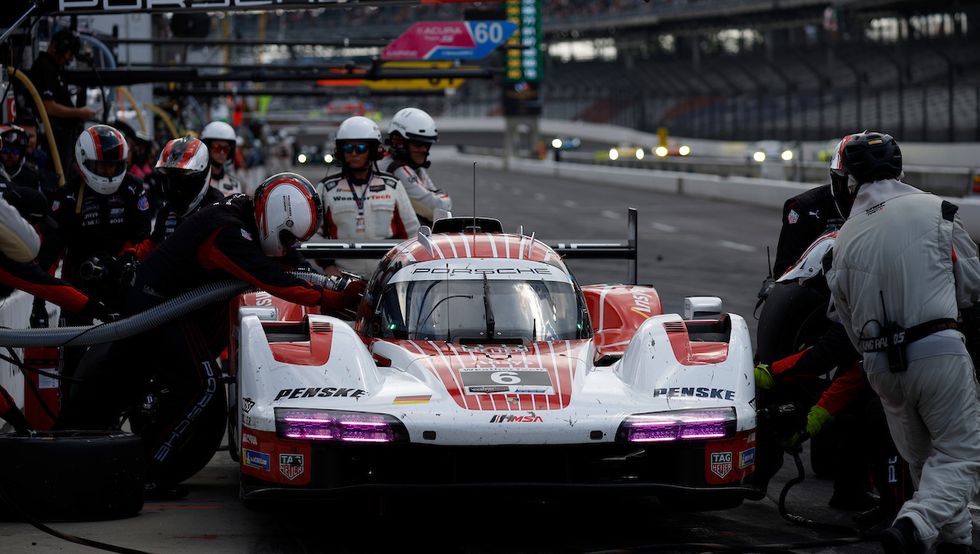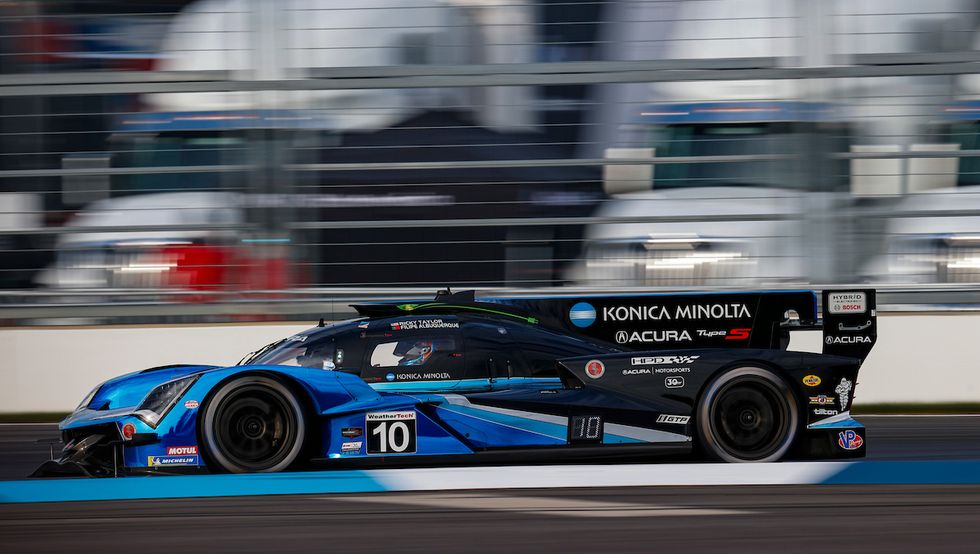The top three GTP manufacturers and teams in the WeatherTech Championship arrive at the season-ending Motul Petit Le Mans separated by just five points.
In a winner-take-all title battle over the arduous hill-and-dale circuit at the Michelin Raceway Road Atlanta, which team and manufacturer is best prepared to come out on top?
As the brake-by-wire pratfalls, multi-car crashes and off-course excursions have attested, just keeping the new GTP hybrids on track can be a challenge. And even after thousands of miles of testing and racing, no manufacturer or team has an edge.
“I think by now everybody would like to have more testing and more understanding,” said Pipo Derani, the driver of the Action Express Racing Cadillac V-Series.R. Derani and co-driver Alexander Sims lead the championship by three points over Ricky Taylor and Felipe Albuquerque, drivers of the Acura ARX-06 of Wayne Taylor Racing with Andretti Autosport, which is still looking for its first GTP victory. Trailing the leader by five points in the Porsche Penske Motorsport Porsche 963 are drivers Mathieu Jaminet and Nick Tandy.
BMW M Team RLL drivers Connor De Phillippi and Nick Yelloly, 38 points behind, are contenders in their BMW Hybrid V8. Long shots are Porsche Penske drivers Matt Campbell and Felipe Nasr, who trail by 73 points.
IMSA WeatherTech GTP Drivers’ Championship Standings
- Pipo Derani, Alexander Sims, Whelen Engineering Cadillac Racing, 2,460
- Felipe Albuquerque, Ricky Taylor, Konica Minolta Acura ARX-06, 2,457
- Mathieu Jaminet, Nick Tandy, Porsche Penske Motorsports, 2,455
- Nick Yelloly, Connor de Phillippi, BMW M Team RLL, 2,422
“It has been a massive learning curve,” said Derani. “The amount of tools that you have (in the cockpit) is amazing. Sometimes it can help and sometimes it can take you in the opposite direction, especially when you are trying to deal with it in the middle of traffic with the slower categories. It’s a level of complexity that has been brought into the championship that adds to the race and to the final result, most likely.”
Prior to the Petit, a multitude of engineers will make pre-race software adjustments covering their respective chassis and, most crucially, the brake-by-wire. During the race, teams will beam telemetry info to “the engineering boys back at the shop”—computer crews who are at teams’ headquarters. Pit strategies will evolve, especially when it comes to the IMSA rules on Maximum Stint Energy.
Brake Settings, Chassis Adjustments Will Be Key
Several drivers have had trouble with braking at the start of races in the first corner, sometimes with calamitous results. That’s because engineers alter the settings prior to the race based on estimates of track conditions and how the Michelin tires will respond.
But absent a race-ending crash like Sebastien Bourdais’s incident on the start at Long Beach, teams usually have a chance to recover from errors in pre-race settings. It was mid-race chassis adjustments that led to a victory at Laguna Seca by Cadillac driver Bourdais and co-driver Renger van der Zande
Porsche’s Jaminet, the winner at Indy last month alongside Tandy, said driver feedback during the race is critical.
“There is so much software stuff, especially on the braking, which you can improve,” said Jaminet. “That’s one of the main topics for us at Porsche. You see so many people going off, especially on cold tires. So anything you can get with the software stuff, which happens in the background, is helpful. Giving feedback is really important about your issues. Sometimes you don’t realize there are some options you can try that might help, things that you would not do in a normal race car. (The engineers) can see in the data what you feel and they are there to give you support. Communication is the key.”
Easing the Feedback Burden
Honda Performance Development worked on making it easier for drivers to provide feedback, said Taylor.
“From the beginning of the program, something that was very important from HPD’s perspective is that we have a new problem, a new car with the hybrid and all this new stuff going on, what is it we need to provide in a way that drivers can understand,” Taylor said. “I think that’s one thing that HPD did really well, communicating with the teams, with (constructor) ORECA to build a robust platform.”
Complicating the effort to maintain a chassis fast enough to beat the competition is the new approach to managing energy in the hybrid system. IMSA gives each manufacturer a standard Maximum Stint Energy for each track and race. That power is measured in megajoules by sensors at the rear axle and the amount for each manufacturer is determined by BOP. Teams can elect to burn more energy through standard horsepower and regenerated hybrid electric power—or they can use less energy per lap, which likely means going slower to extend the time and distance between pit stops. There is a severe penalty if a team exceeds its Maximum Stint Energy.
“It’s something that we’re very much aware of,” said Bourdais. “We can pretty much pick how much fuel we actually put in the car, so it really is virtual energy. It kind of opens up different strategies.”
“You obviously keep an eye on the amount of fuel you have in the car. But you mostly have to keep an eye on the energy you have left to finish the race. How much regen you get and how you use it is impacting the energy per lap, and that is governing everybody.”
Expect the Unexpected
The race victory at the Petit in the top prototype class is usually decided in the dark during the closing stages. But the pressure of the new GTP cars’ complications has added a new dimension to a race that often has surprise endings.
“The more we go, the more we understand and the more we get to grips with those software integrations,” said Derani. “It makes things more complicated with more thinking behind the wheel, but it also makes it more interesting for the engineers. It brings everybody closer together. Something to watch out for between the day and the night. Those little tweaks could end up making a difference.”
Read the full article here




